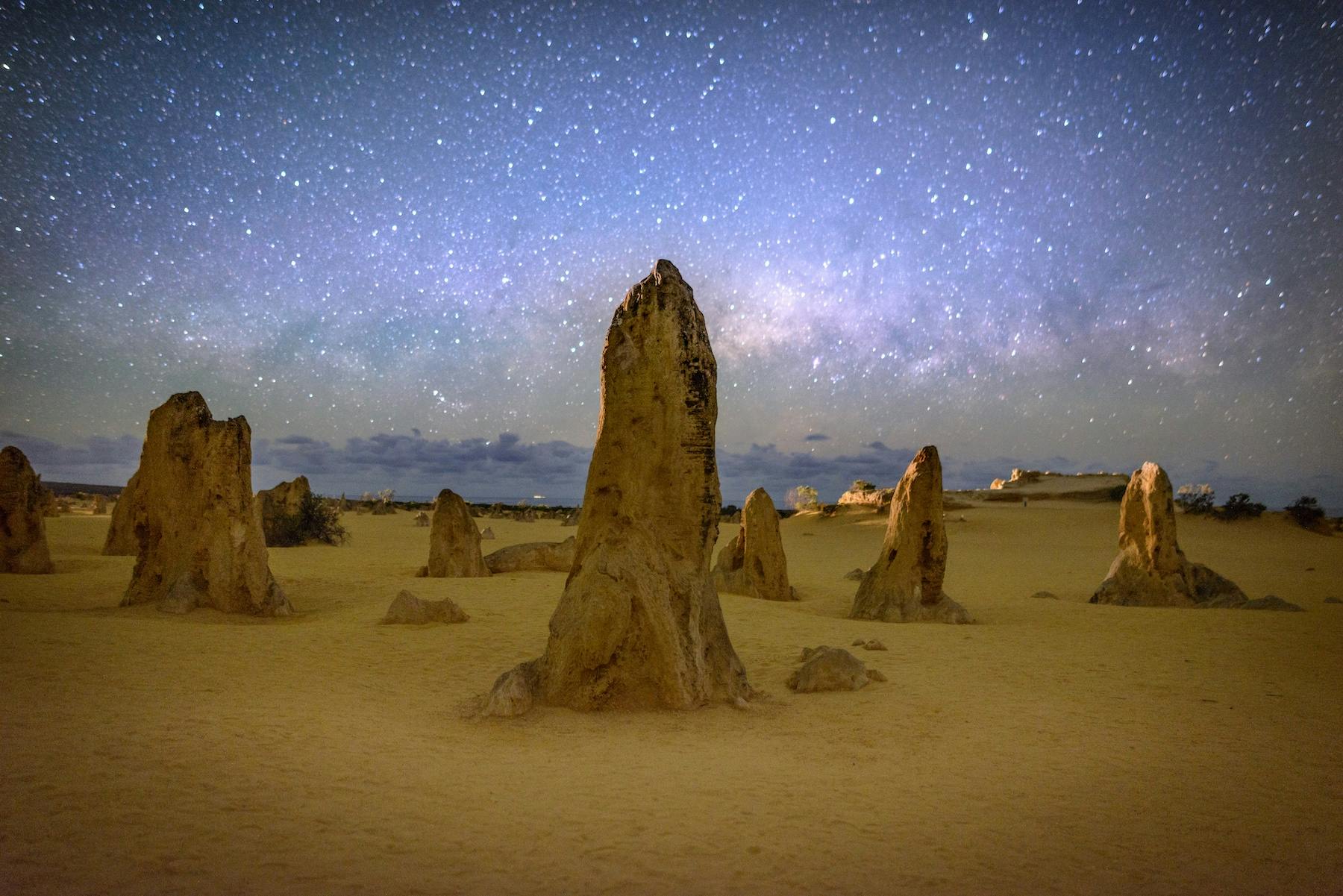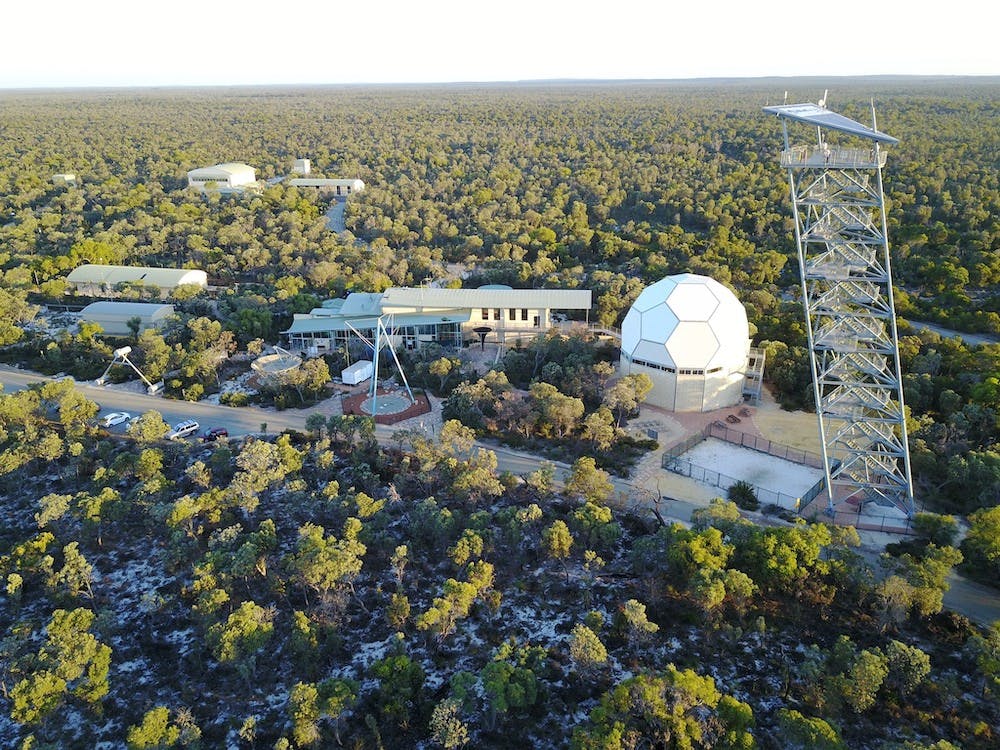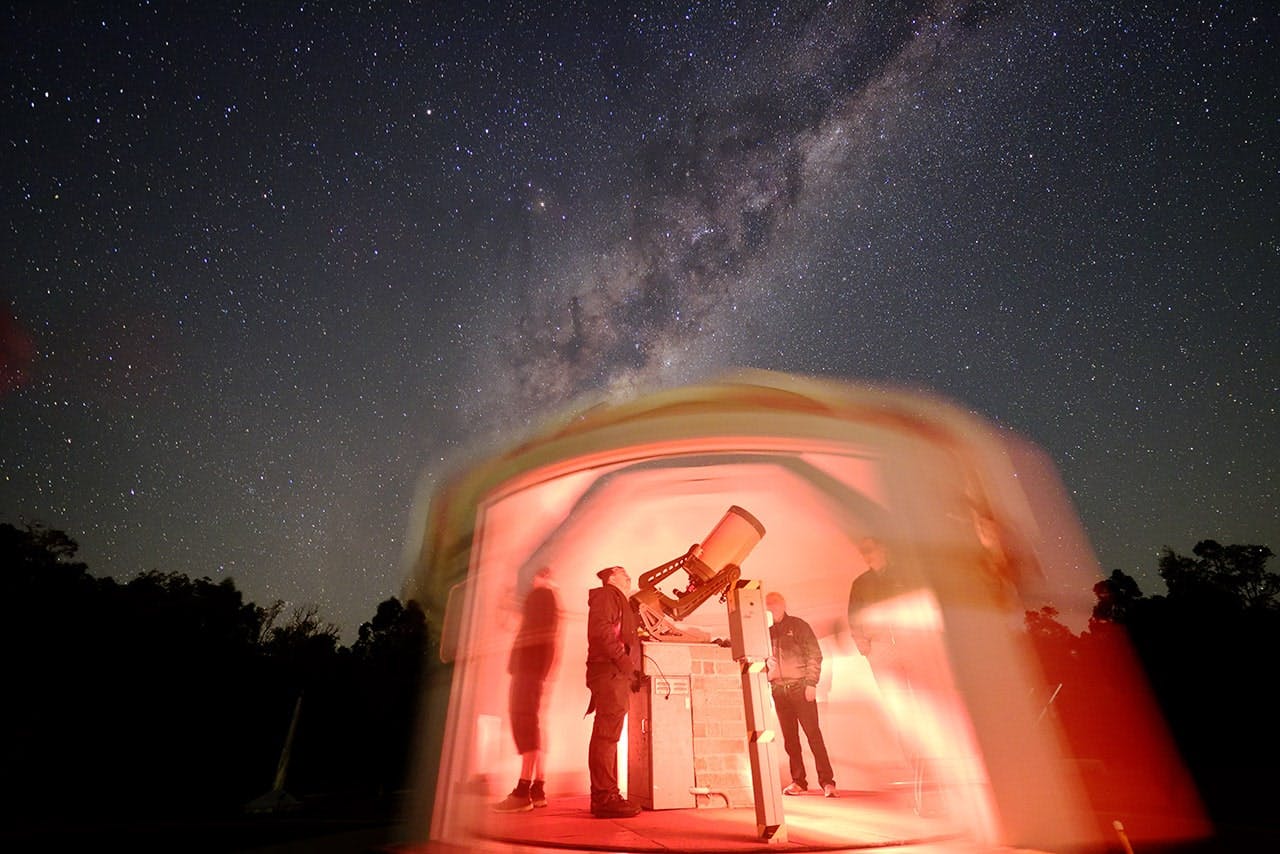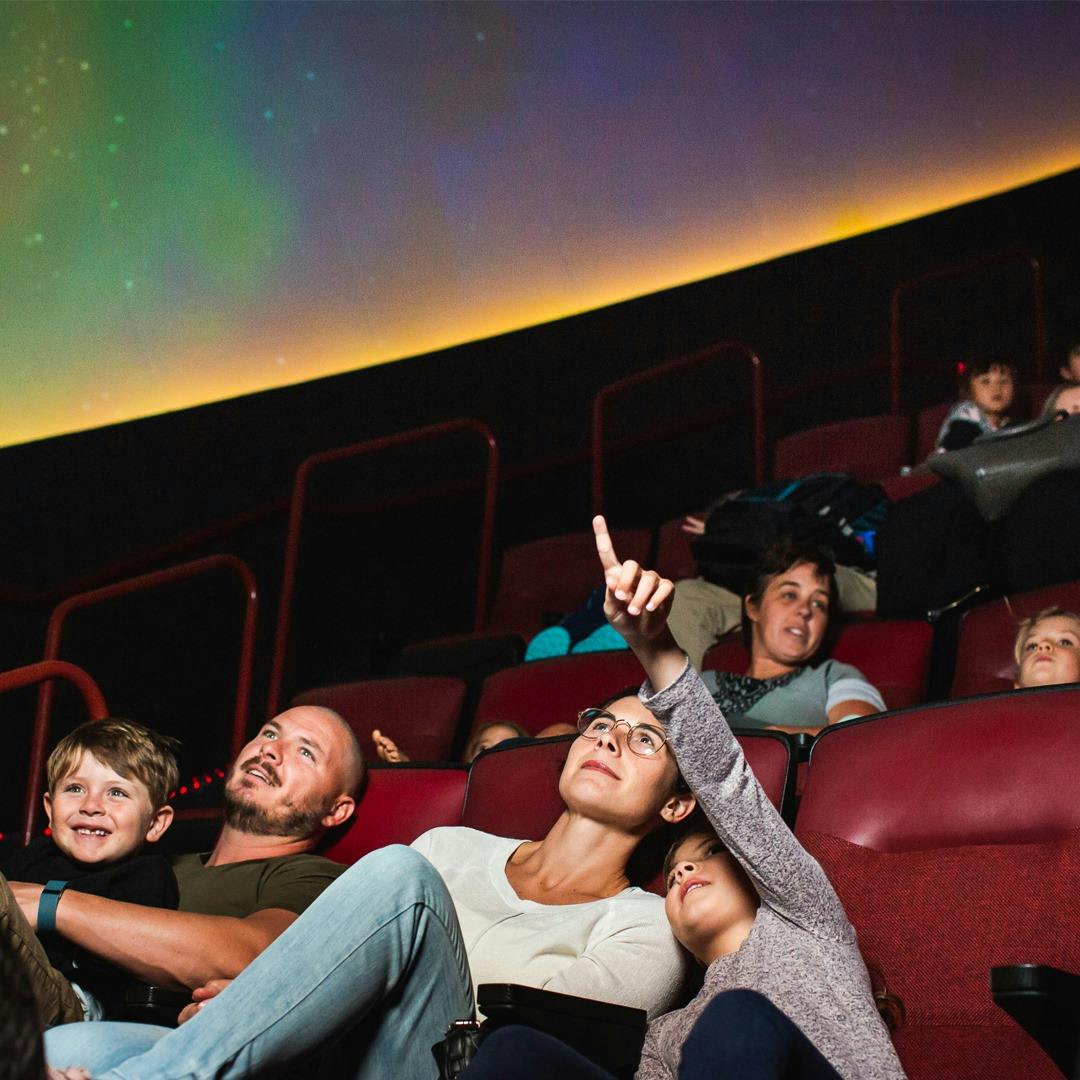12 Of The Best Places To Go Stargazing Around Perth

Words by Cassie Wilkins.
Perth may well be known as the City of Light, but you don’t have to go far beyond the metro to experience the majesty of our dark night skies in all their stellar glory. And, while the sun-lovers might already be missing the hot days of summer, the stargazers amongst us have been eagerly awaiting the onset of autumn – aka the Milky Way season – prime Astrotourism viewing time.
An activity that has entertained, informed, enlightened and united people since time immemorial, we’re lucky enough to live in a place where on a clear night you can simply pick a direction, drive about an hour out of the city and see amazing stars – but there’s something extra special about seeking out a cool place to watch distant galaxies and muse on the mysteries of the universe.
So, grab a blanket or two and some snacks and hop in the car, it’s time to hit up our favourite places to go stargazing in Perth (and nearby).
Gravity Discovery Centre & Observatory, Gingin
Not only one of the best spots just outside of the city to see our epic Dark Sky in all its glory, Gingin’s Gravity Discovery Centre & Observatory also has a retracting roof for incredible stargazing – along with some pretty sweet telescopes! Just over an hour from the CBD, the observatory offers weekend workshops where you can learn about the constellations as well as the incredible history of Aboriginal astronomy.
The oldest astronomers in the world, First Nations people use the night sky to navigate, explain tidal patterns and eclipses, predict seasons and note weather patterns, with their findings and observations passed down in Dreaming stories for millennia. Did you know they can even map comets and crater impacts from tens of thousands of years ago based on the stories still told today?

Mundaring Weir, Perth Hills
Far enough from the city to escape the light and yet close enough for a nice cruisy evening drive, the Perth Hills are a popular spot for astrophotographers, astronomers and astro-admirers alike. Steeped in history, the still waters of Mundaring Weir are great for seeing shimmery reflections in the dark water, while if you can tee it up right, the heritage architecture and rugged horizon make for great photographs.
The Pinnacles, Nambung Desert
One of WA’s most popular tourist attractions by day, at night the Pinnacles transform into a magical, otherworldly wonderland; the eerie limestone crags and rippled sand creating perfect foregrounds for a foray into astrophotography or just a great spot for a sunset picnic-turned-stargazing session. Two hours north of Perth – or just 10 minutes south of Cervantes – the Pinnacles are a popular spot for both astrotourists and astrophotographers.
Perth Observatory, Bickley
While we all have those stargazing apps these days, there’s still nothing quite like learning from the experts. First established in Kings Park in 1896 – before moving out to the hills in the ‘60s to escape the glowing (and growing) city lights – Perth Observatory was once world renowned for its scientific discoveries. Now retired from its official research capacity, these days the observatory is maintained as an educational site where visitors can learn all about the big beyond.
Perfectly timed for Milky Way season, every winter Aboriginal Nature Trekz also offer Perth Observatory Cultural Night Tours, where you visit the Aboriginal Astronomy Centre, go on a night walk through the bush and sit around a campfire learning about Dreamtime stories, song lines and the connection between cosmos and country.

Lake Clifton, Preston
Amazing in the day and even cooler at night, Lake Clifton’s Boardwalk is a rustic wooden walkway extending out over the reef – where you’ll be suspended between the ancient thrombolites below and the ancient-yet-ever-changing universe above.
One of the world’s first living organisms, these rock-like thrombolites may be only 2,000 years old, but as a species, they’ve been unchanged for the last 570 million years – making them one of the few things in our world that would have been around back when there wasn’t much more than them and the stars above. Pretty cool, hey? They’re even more beautiful when there’s some moon to illuminate them in the water while the Milky Way brings the magic to the sky above.
Island Point Reserve, Herron
There’s something extra magical about stargazing next to water – and the calm waters of Island Point Reserve (just down the road from Lake Clifton) provide the perfect ambience. While the city lights in the distance shine a little brightly, they also bring some perspective to the landscape; reminding us that even when it feels like we’re all alone in the universe with nothing but the stars stretching out above us, civilisation – with all the creature comforts we know and love – is still just around the corner.
Lancelin Sand Dunes, Lancelin
If you’ve ever wanted to feel small in the world, just go for a night-time stroll over dunes made up of billions of grains of sand under a sky dotted with billions of stars (just don’t forget to bring a picnic blanket – those grains of sand tend to get everywhere!)
An hour and a half from Perth, Lancelin makes a great day trip – where you can go sandboarding or race over the dunes on a buggy or in a 4WD, relax on the beach or just enjoy a drink or two in the Endeavour’s self-proclaimed “best beer garden in the world” to kill time until the sun goes down and the stars come out.
Rottnest Island (Wadjemup)
We’ve covered lakes with stars, dunes with stars, sea with stars, but what about islands with stars?! Better associated with quokkas and cocktails than starry skies, Perth’s holiday-favourite, Rotto, is still far enough away from the city glow to marvel at the Milky Way. Head over to the beaches on the west and you’ll find nothing but endless ocean ahead and oceans of stars above. Even better, check out their (usually annual) stargazing and Dreamtime storytelling events.
Lake Leschenaultia, Chidlow
45 minutes out of Perth, Lake Leschenaultia might be on your radar as a pretty sweet picnic and swimming spot on a hot summer’s day, but did you know it’s also one of the best places to go stargazing in Perth? You’ll have to make a night out of this one though as the gates close half an hour after sunset every day – so load up the swag and pack a picnic to feast on the beach and enjoy a little exclusive all-night galaxy gazing!
Serpentine Dam, Serpentine
A little less popular than Mundaring – but much more convenient for those south of the river – Serpentine Dam is a dam good spot for stellar-staring (sorry, we couldn’t resist!) We love visiting on calm, moonless nights when the Milky Way is bright enough to illuminate the darkness.
Note, the boom gates around the dam close at 5/6 pm and after-dark parking is limited, so scout it out before you go. If you do go and it’s a bust, Blue Rock in Jarrahdale is a decent alternative just up the road.
Subscribe to our free newsletter!
Cervantes Dunes & Lake Thetis, Cervantes
While we could talk about celestial nights at the Pinnacles alllllll day, if you’ve made it up that far then you might as well drive just a few minutes further to Cervantes Sand Dunes and Lake Thetis and check them out too. In fact, we might go as far as to say we prefer the dunes at Cervantes to Lancelin dunes for stargazing – though you can’t really go wrong with either.
The stromatolites at Lake Thetis also rival the thrombolites at Lake Clifton – both very cool in their own ways.
Scitech Planetarium
Last but not least, this is the perfect spot for daytime stargazing in the middle of Perth. If driving in the dark dodging wayward roos isn’t your idea of fun, it’s too cold for the kids or you want to actually know more about the stars you’re looking at (beyond what the apps can tell you, at least!) then Scitech’s Planetarium is the place for you. As a bonus, you also get to explore the rest of their super cool exhibits as well – count us in!

More like this:
Perth Observatory: What You Need To Know